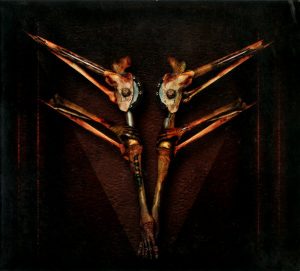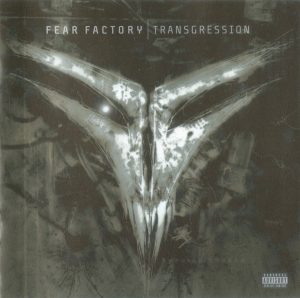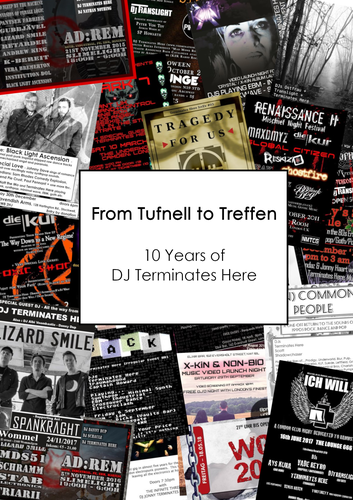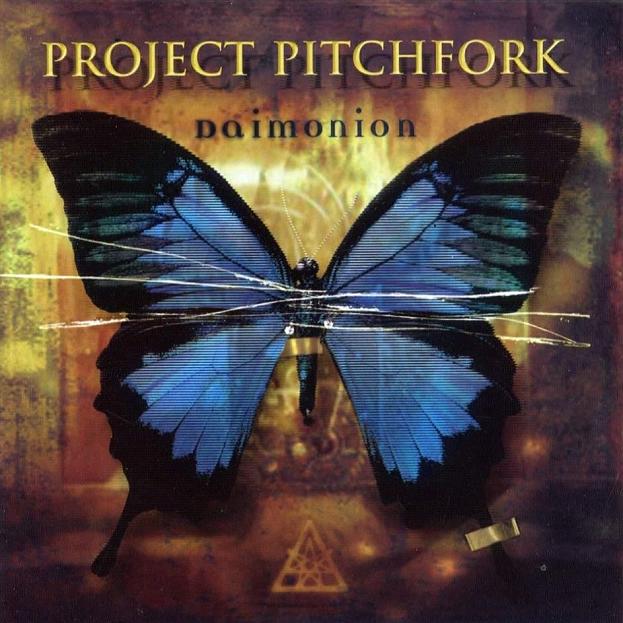Transgressed
Fear Factory briefly split in 2002, following Burton C.Bell’s departure. Stories as to why and who-did-what are many and varied and largely depend on who you ask or which source you consult. The end result was that Dino went back to his deathgrind roots via the Mexican band Asesino, whilst Raymond Herrera and Christian Olde Wolbers began working on new material together, which was sufficient to convince Burton to re-join. Christian took over as guitarist, and Byron Stroud of Strapping Young lad came in as bassist. Long-term label Roadrunner Records were also out of the picture on less that amicable terms.
The end result of this was 2004’s Archetype, an album that saw a step back from the ultra-precise machine metal sound – Fear Factory sounded like a band once more on record as well as on stage, with Raymond’s drumming in particular sounding like a human being beating away from the drum stool rather than the more established is-it-or-isn’t-it-a-drum-machine trickery. Whether this was by purpose or an inevitable product of the line-up change is not clear – the sound is otherwise unmistakably Fear Factory. Opening track Slave Labor revisits the metaphor of setting oneself aflame in the name of escaping oppression, and initially it appears that a band who never really went away are back.
But then comes Cyberwaste, a statement on the toxicity of online troll culture (didn’t improve, did it?), and what would have been a valid message gets buried in the non-stop beat blast, the light and shade of their earlier works substituted by near-ceaseless metal assault. And this lays down the pattern for a substantial proportion of the album. The purist metalheads are being won back, but at the cost of their crossover audience. Even the token cover version – namely Nirvana’s School – gets it’s core dynamism flattened by this no-hold-barred wall of noise, and at this point one starts to wonder whether this back-to-basics approach was such a good idea.
However, glimmers of their true talent are still to be found. The climatic finale of Drones and the soaring chorus of Undercurrent are fleeting reminders of the ‘other side’ of the Factory sound, and the downtempo plucks and ascending strings of Bite The Hand The Bleeds provides a welcome pause for breath. But there is only one truly great song here, and given future events, it’s one the band as it is now would rather wish to remain forgotten. Archetype is a scathing attack at the recently departed Dino Cazares. Lines like “The Infection Has Been Removed – The Soul Of This Machine As Been Improved” cut deep, and amidst all the string-thrashing and skin-bashing that comprises the bulk of this album, this is the one moment where the underlying message is clear to all listeners.
Towards the albums conclusion, there is a long and somewhat misplaced ambient piece written by Burt and live keyboard player John Bechdel. Whilst it’s not an exceptional example in the style, it’s title – Ascension – provides a clue as to what this due were planning next. Both wishing to pursue styles outside of metal, they were in fact in the process of forming offshoot project ‘Ascension of the Watchers’. But they wouldn’t truly focus on this before one further outing by the band as a whole.
Singles and Versions: There were a few promos but the only real single was ‘Bite The Hand That Bleeds’, who’s main selling point was a bonus DVD containing the videos for this and Cyberwaste, plus some strange computer animation mated to an otherwise unavailable tech-beat remix of Archetype. The album is available in a couple of bonus DVD editions – you’ll either get half an hour of ‘making of’ interview snippets or a film about their 2004 Australian tour. It really depends wheter you want to see the band engaging in serious talking or messing around -there’s only fragments of live footage spliced in.
You’ve probably heard the term ‘contractual obligation’, and it’s never been a secret that Transgression was Fear Factory’s entry in the canon of ‘do we have to?’. Following just a year after its predecessor, the first half largely consists of the band going through the motions, knocking out the usual industrial/death/grind/whatever-you-call it, of which one track at best (the title track) is passable. They could have recorded the whole album like this, mailed it off to their label and been on their way. But at the halfway point, the surprises start.
Bassist Billy Gould of Faith No More fame is brought in for a couple of songs. Echo Of My Scream is the latest in a long line of drawn-out atmospheric numbers – though on this occasion it’s a little TOO drawn-out to be exceptionally memorable. Supernova is an attempt at almost-conventional guitar rock, the nicely harmonised chorus the highlight of a band that’s otherwise clearly in the midst of an identity crisis – there’s more to innovating your sound than just turning up at the studio and deciding to play a different style for a change. New Promise is equally unsure as to what it wants to do or achieve before we get the final proof that this album was a rush-job all along. TWO cover versions.
As is typical with FF covers, both U2’s I Will Follow and Killing Joke’s Millennium are played straight with little innovation, but this is ironically to the benefit of both – they are essentially good songs that didn’t need a total overhaul. In the final reckoning, the U2 cover still retains the whiff of a collective that was not sure if it wanted to be an alt-rock or metal band, but the chugging riff of mid-90s ‘Joke is a good fit for the factory issue sound. But it’s never a good sign when someone else’s songs are the selling point. The closing number Moment of Impact is a return to uncompromising in-your-face metal, but it scarcely matters at this stage.
Singles and Versions: Other than a couple of promos, the CD singles are over by this point, but there are a couple of bonus disc versions of the album out there. One special edition has a 3-track bonus, featuring 3 live tracks from the previous album (also release separately as “Live On The Sunset Strip”).
The other offers bonus DVD offering the entire album mixed in 5.1 sound – the fact that I have the facilities to play such a thing but never bothered to sit through the whole album again sums up my views on validity of this move. There are also three live-in-the-studio clips (all ‘metal’ songs) and 20 minutes of the band looking like they’re actually taking the recording process seriously. All these things would be of value on one of their keynote albums, but here it is a case of flogging a horse that wasn’t so much dead as never really alive in the first place.






